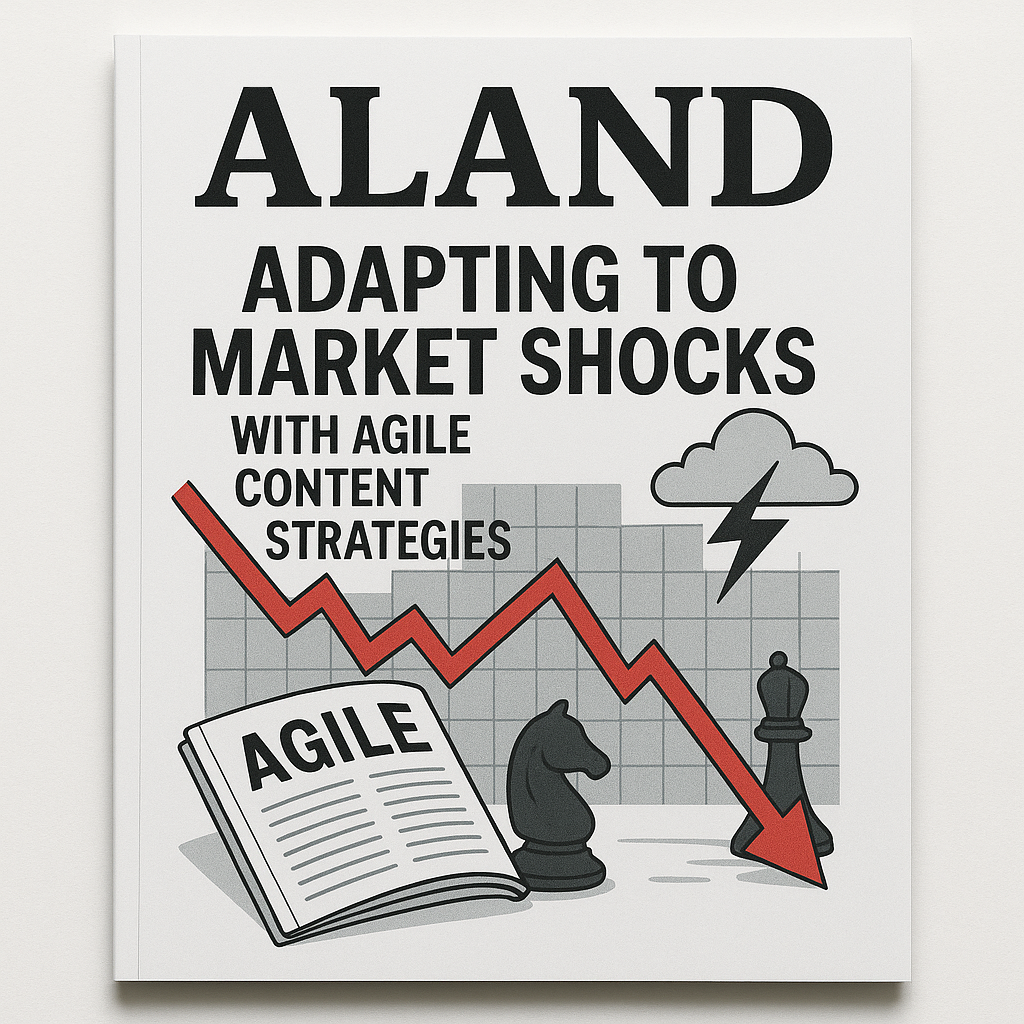Adapting to Market Shocks with Agile Content Strategies
- Published Date: 9th Jun, 2025
-
4.8★ ★ ★ ★ ★(91)

By Dr. Pooyan Ghamari, Swiss Economist and Founder of the ALand Platform
Agility—The True Competitive Edge in an Era of Uncertainty
Markets today are defined less by predictable cycles and more by shockwaves. Economic disruptions—whether triggered by geopolitical events, regulatory changes, natural disasters, technological breakthroughs, or viral rumors—can sweep through global systems at a speed that leaves slow organizations exposed and irrelevant.
In this volatile landscape, agility is not a luxury—it is a necessity. But agility is not merely about pivoting products or retooling supply chains. In the digital economy, it is above all a function of communication: how rapidly and honestly you inform, reassure, educate, and mobilize your audience when the world changes overnight.
Agile content strategy is the discipline of responding to market shocks with speed, relevance, and authority—turning chaos into clarity, and adversity into advantage.
Drawing from my experience advising global platforms, investors, and governments across real estate, technology, and economic development, I have witnessed how those who master agile content become the trusted guides in every storm. Here’s a blueprint for thriving when disruption becomes the norm.
Why Agile Content Matters During Market Shocks
The Crisis of Trust and the Battle for Attention
When uncertainty reigns, audiences seek not just facts but perspective. They want to know what just happened, what it means, and what to do next. Yet too many organizations freeze, retreat, or recycle stale talking points while anxiety surges and rumors proliferate.
Agile content is the antidote to confusion.
It empowers you to set the narrative, build trust, and even outflank larger competitors who are slower to respond or less transparent. In the age of instant information, whoever communicates first and best, leads.
Speed Versus Precision—And Why You Need Both
Agility is not about reckless speed. Effective crisis communication blends rapid response with evolving accuracy, signaling both competence and humility. The goal is not to be omniscient, but to be present—willing to say “we’re still learning, but here’s what we know now.”
Wizard Action Plan: Building Agile Content Systems for Volatility
1. Create a Crisis Content Protocol
How:
-
Assemble a cross-functional quick-response team with clear roles (content, legal, technical, PR).
-
Develop templated communications for common scenarios (market crashes, regulatory shifts, platform outages).
-
Designate approval chains for emergency messaging to avoid bottlenecks.
-
Conduct crisis simulations and post-mortems to refine processes before real events occur.
2. Launch a “State of the Market” Weekly Video or Email During Volatility
How:
-
Schedule weekly video briefings, podcasts, or email summaries addressing the latest developments and their implications.
-
Invite guest experts or market analysts to lend credibility and diverse perspectives.
-
End each update with actionable insights, not just recaps, to help your audience make informed decisions.
3. Collect and Publish Real-Time Insights from Your Community
How:
-
Open real-time channels (Slack, Telegram, comment threads, surveys) for immediate feedback.
-
Curate and share anonymized customer stories, challenges, and pivots.
-
Highlight “in the field” updates to show your brand’s commitment to listening and learning.
4. Survey Audience Needs in Response to Shocks and Pivot Messaging
How:
-
Deploy short surveys, polls, or AMAs after significant events to gauge concerns and interests.
-
Segment responses by customer type, geography, or risk profile for more tailored content.
-
Rapidly update your editorial calendar to address new priorities, shelving irrelevant or insensitive campaigns.
5. Debrief After Each Event to Improve Your Rapid Content Workflow
How:
-
After each major event, convene your crisis team for a candid review: what worked, what failed, what surprised you.
-
Analyze engagement metrics (open rates, replies, social shares) to refine future response tactics.
-
Update your crisis content protocol based on new lessons, maintaining a “living document.”
The Bigger Picture: Agile Content as a Strategic Asset
-
Trust and Loyalty: Brands that lead with transparent, responsive communication become indispensable during uncertainty—and remain top of mind when calm returns.
-
Competitive Advantage: Agility allows smaller players to move faster than giants, winning mindshare and market share during moments of flux.
-
Innovation: Real-time insights and feedback loops fuel rapid product improvements and unexpected opportunities.
Content Agility—Your Playbook for the Unknown
There is no longer such a thing as a “stable” market. Volatility is the new normal, and the speed of your communication—grounded in empathy and data—will define your brand’s future.
An agile content strategy is not just a crisis plan; it is a permanent muscle, a culture of readiness and relevance.
Build your rapid-response system now, and you will lead your market—not just survive it—through every coming shock.
About the Author
Dr. Pooyan Ghamari is a Swiss Economist, global strategist, and Founder of the ALand Platform. He is renowned for guiding leaders through economic transformation, risk, and digital communication. Dr. Ghamari’s frameworks empower organizations to respond nimbly to disruption, build lasting trust, and capture emerging opportunities in a world where agility is the ultimate strategic advantage.

